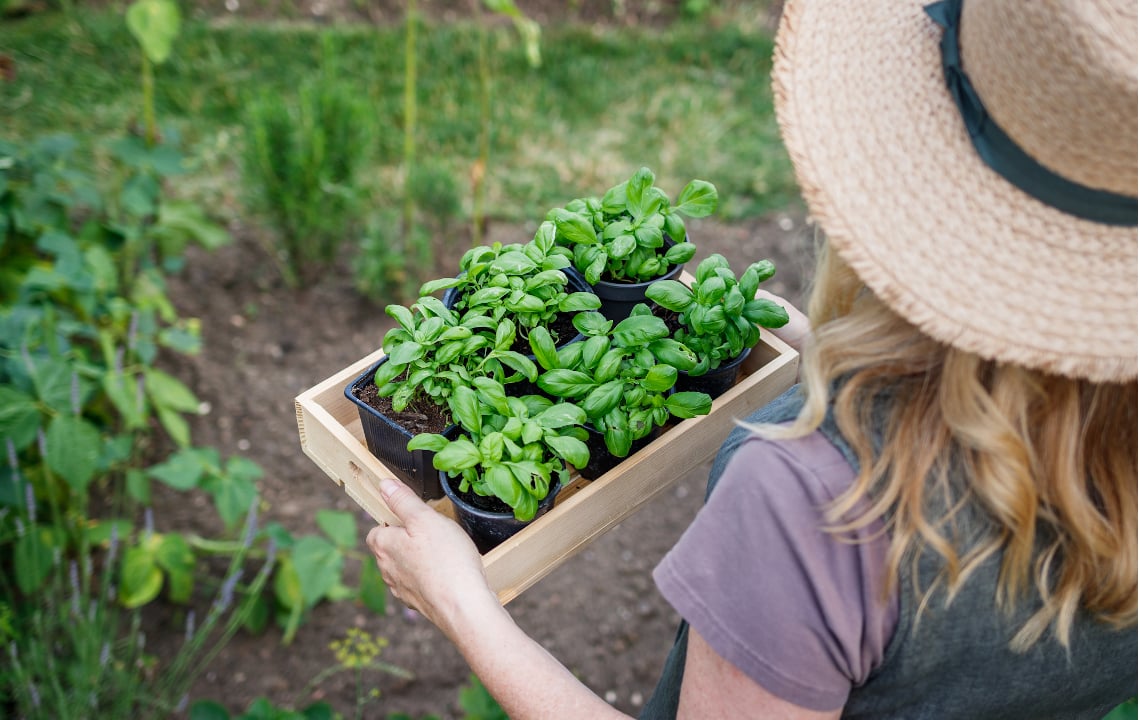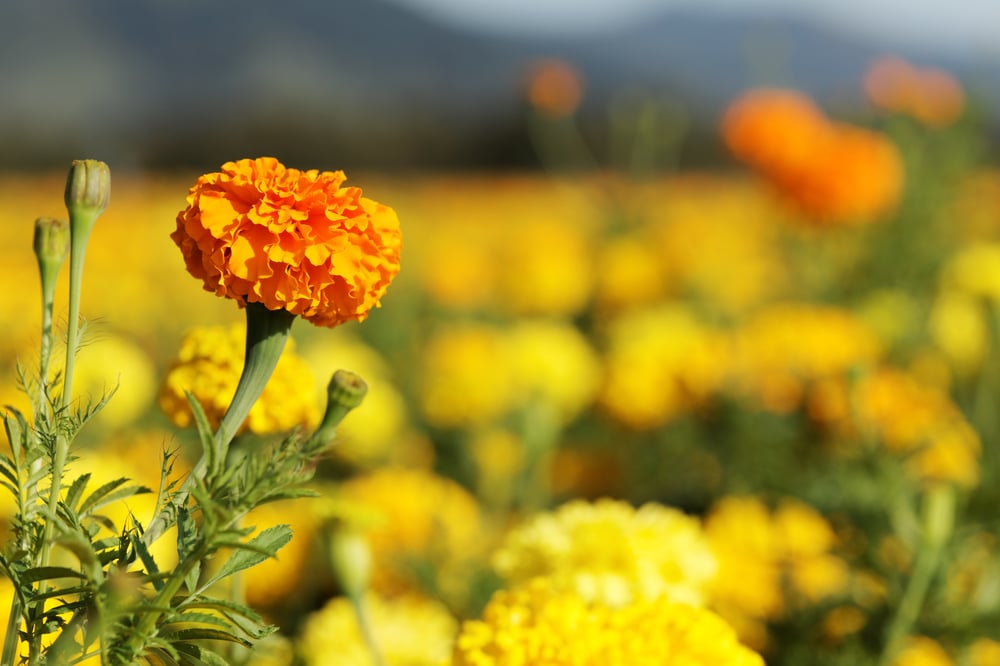Tap into the many benefits of companion planting as an alternative to pesticides in the garden this spring. Use certain flowers and herbs to repel pesky insects while attracting beneficial pollinators and predator bugs.
Have you ever planted a garden full of tomato plants only to find them chomped down to the ground by hornworms weeks later?
Or you planted an entire row of squash and zucchini, only to find squash bugs and deer enjoyed a feast just before harvest?
If you can relate to these gardening woes, we have a solution: companion planting for natural pest control.
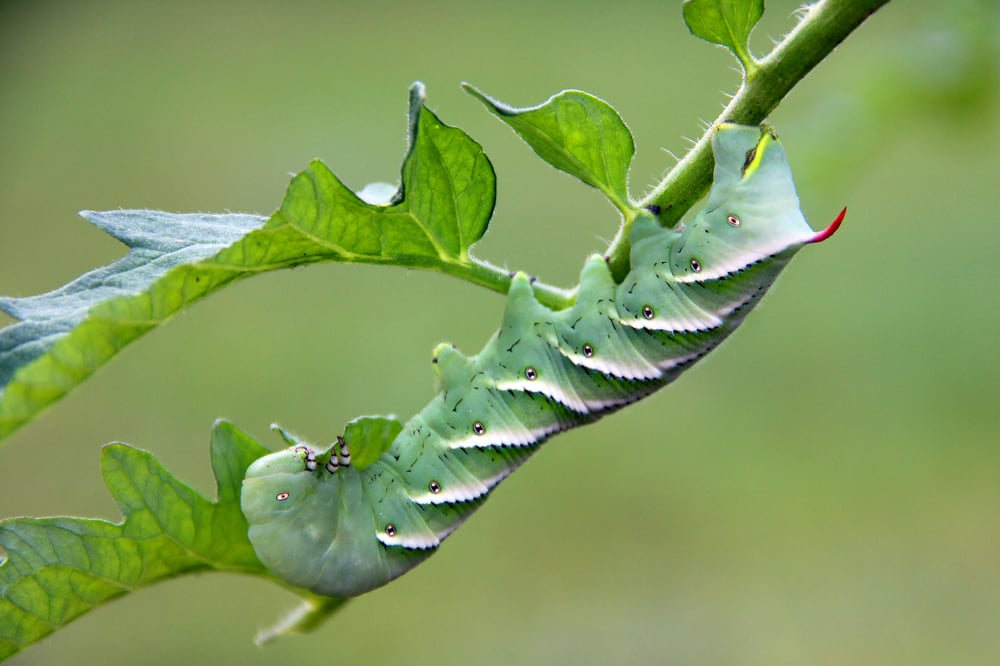
Inevitable Garden Pest Pressure
Every gardener deals with pests and has to find a solution or else their hard work goes to waste.
Sure, you could spray commercial pesticides, but what if there’s a safer, equally efficient way of warding off pesky bugs that nibble away at your garden?
Lauren Landers, an organic gardener, Maine-based homesteader and writer and creator behind the Zero Waste Homestead, has a passion for all things pollinators and plants. She shares with us how and why avid gardeners should choose companion plants.
When selecting companion plants for natural pest control, Landers recommends choosing fragrant herbs and nectar-rich flowers.
“Herbs with strong fragrance will drive away an assortment of garden pests,” says Landers. “Some also repel larger plant nibblers, like deer and rabbits. Flowering plants, on the other hand, are highly attractive to pollinators, as well as beneficial insects like hoverflies and parasitic wasps that feed on pest caterpillars and other destructive bugs.”
There are many benefits to companion planting.
From weed control to increasing soil health, gardeners have embraced natural gardening techniques for decades. But the most notable, and for the sake of this article, is that of pest control and the attraction of beneficial insects such as pollinators and predator bugs.
Whether you’re planning a large-scale or personal homestead garden, adding the beauty and functionality of pest-controlling companion plants is a must.
Here Are 6 Of Our Top Companion Plant Picks For Natural Pest Control
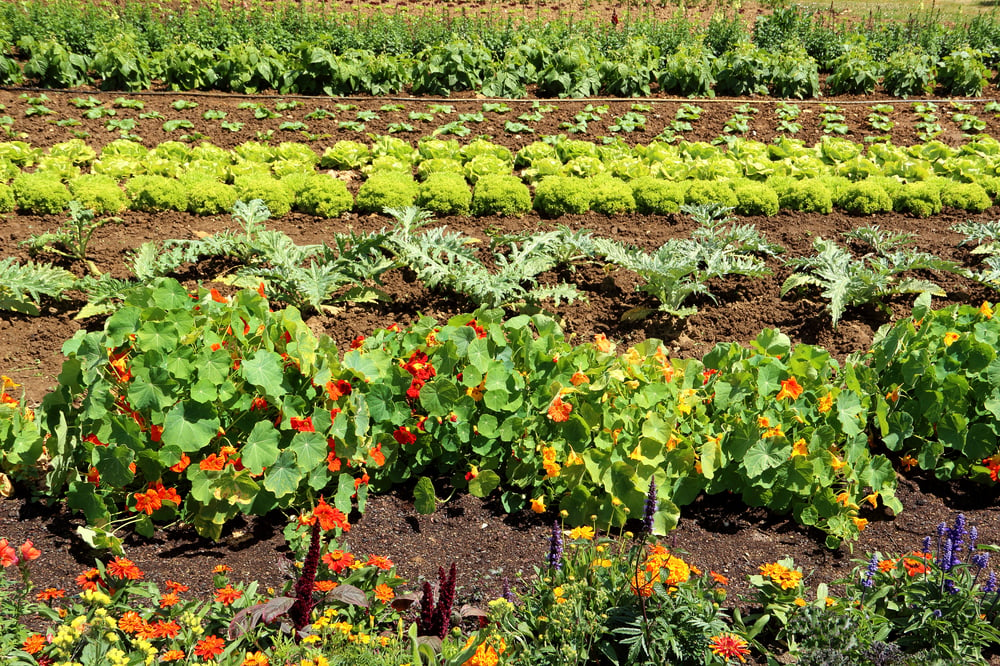
1. Companion Plant #1: Nasturtiums
Known for its versatility as a companion plant, nasturtiums can be used in vegetable beds, flower beds, and container gardens for natural pest control.
“Nasturtium plants repel a wide variety of insects,” explains Landers. “This includes aphids, squash bugs, and bean beetles. Their long bloom time means you can take advantage of nasturtiums’ pest-repelling properties from spring through fall.”
To control these types of pests, plant nasturtium with:
- Carrots
- Broccoli (and other brassica family plants such as cabbage and cauliflower)
- Kale and spinach
- Tomatoes
Companion Plant #2: Basil
Fresh basil from the garden adds a delicious aroma and flavor to many pasta dishes. But did you know that basil can also be used in the garden to repel pesky insects, and even attract beneficial pollinators?
“Basil is famously paired with tomato plants since it is said to improve the taste of tomatoes,” says Landers. “But basil can also be used for pest control, and its scented leaves repulse potato bugs, flies, and even mosquitoes!”
Companion plants to plant with basil include:
- Tomatoes
- Garlic
- Oregano
- Peppers
Learn more about basil in: 5 Ways To Preserve Basil.
Companion Plant #3: Marigolds
“Like nasturtiums, marigolds’ warmly-colored flowers have tons of autumnal charm,” Landers explains. “But marigolds are also top-notch companion plants for most vegetables.”
According to Landers, marigold flowers attract pollinators and boost pollination rates for plants like cucumbers. They also repel bean beetles, aphids, squash bugs and cabbage moths.
Marigolds are great to plant near:
- Cucumbers
- Potatoes
- Bush, pole and green beans
- Peas
- And for extra natural pest control, plant with nasturtiums
Companion Plant #3: Rosemary
A great addition to the garden, rosemary is an ideal herb for adding beautiful greenery and increasing the health of its neighboring plants. It is highly beneficial for repelling harmful insects, attracting pollinators and attracting predator bugs (such as ladybugs).
Landers says rosemary is famously used as an edible herb, but has other benefits, too. “Rosemary’s strong scent can deter carrot flies, bean beetles and cabbage moths. But it doesn’t grow well with water-loving vegetables since rosemary plants prefer relatively dry soil.”
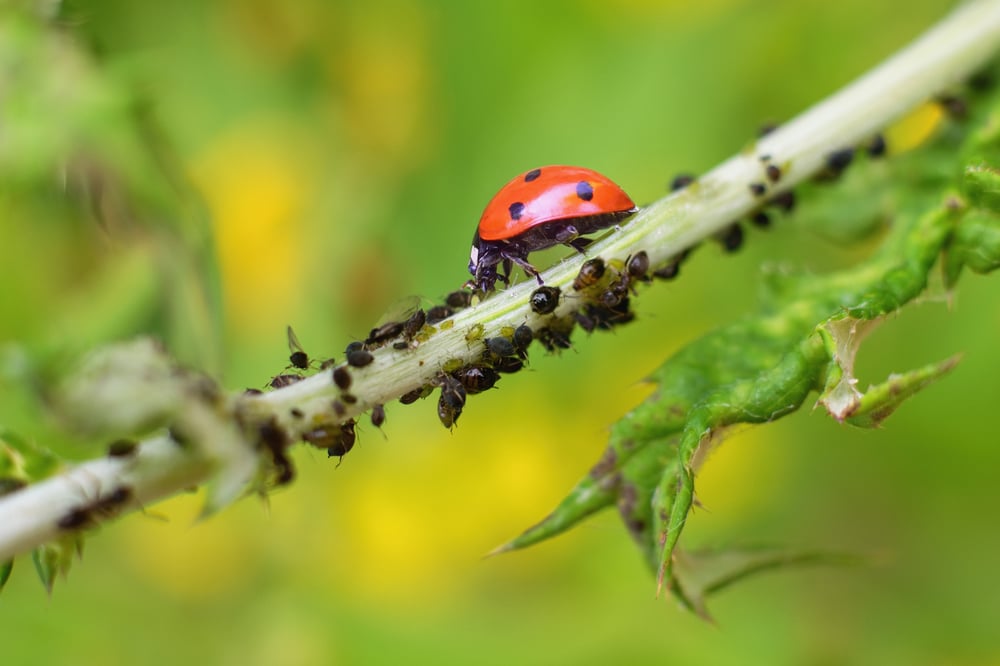
Ward off pesky pests with rosemary. Plant this hardworking plant by:
- Strawberries
- Cabbage
- Lavender - together, rosemary and lavender attract a variety of pollinators to your garden.
Companion Plant #4: Oregano
Cabbage loopers can quickly ruin a crop of brassicas, but Landers says oregano can be the solution.
“If you grow oregano near your cabbage patch,” explains Landers, “oregano flowers will attract an assortment of beneficial insects that will feed on pest caterpillars and protect your broccoli, kale, cabbage, cauliflower and Brussel sprouts.”
Oregano can also be planted with:
- Cucumbers
- Asparagus
- Peppers
- Tomatoes
- Melons
Companion Plant #5: Mint
Mint is a handy kitchen ingredient and an essential part of any herb garden. Planting mint with its companion buddies will keep aphids, spider mites and white cabbage moths at bay.
“Mint is a vigorous grower,” says Landers. “If you want to use it for pest control, it’s best to keep it in pots. However, mint is a very useful plant that can distract various insects from vulnerable veggies. It’s also a natural rodent deterrent.”
Plant mint near:
- Carrots
- Cabbage and cauliflower
- Beans
- Peas
But You Don’t Have To Stick With These Six Plants
For even more companion planting benefits, Landers recommends allowing some of your edible herbs to go to flower.
“Plants like parsley, dill and chives yield lots of little flowers that beneficial insects and pollinators can’t get enough of!”
To learn more gardening tips and tricks from Lauren Landers, visit her website and blog at www.zerowastehomestead.com. You can also find her on Instagram.
Want More Expert Gardening Advice For Your Rural Homestead?
We have dozens of helpful articles under the Gardening section of this blog, including:


